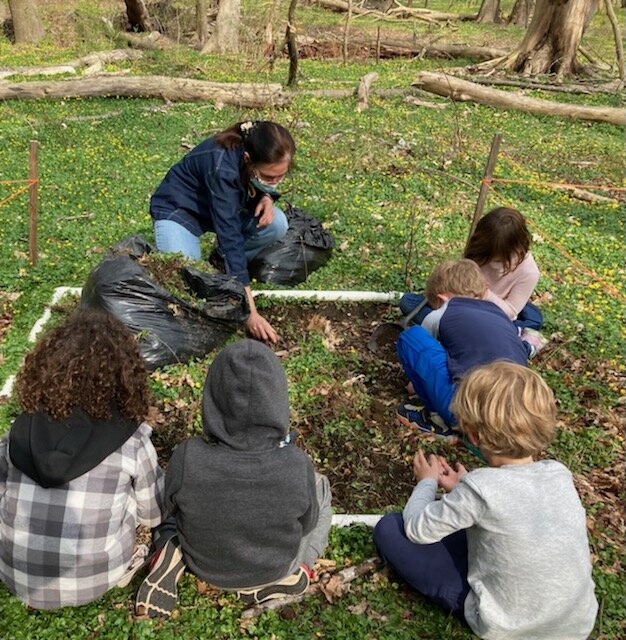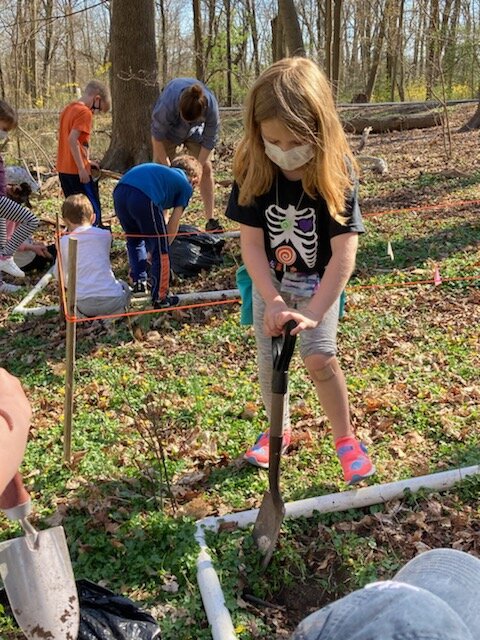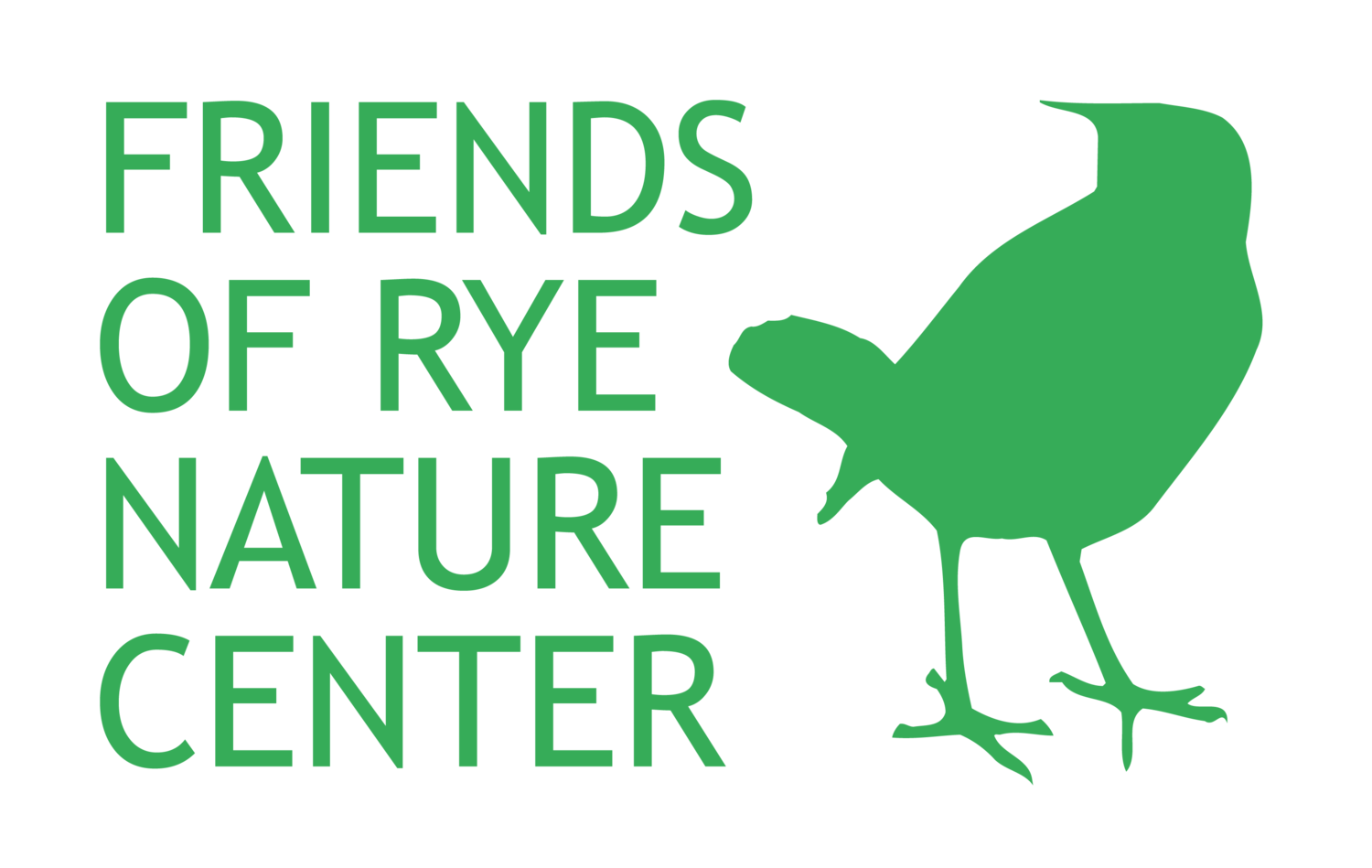—Katie Jamer, Environmental Educator




At the Rye Nature Center, we believe in fostering a love for the environment while also developing young minds to be active contributors to the conservation of our forest. One way we practice conservation with our classes is invasive plant species awareness. Over the last three years, students in our Forest Kindergarten and Wild Outside after-school programs have been assisting with an ongoing invasive species removal experiment for the plant lesser celandine (Ficaria verna).
Originating from Europe and Asia, lesser celandine has quickly become a plant to watch in New York State due to its growth pattern and need for management. Growing in the spring, this plant is identified by its yellow flowers and ability to cluster together. Lesser celandine spreads through its tuberous roots rather than by seeds. This makes the plant difficult to manage because it can regrow after removal if the roots are still present in the soil. Once present in an area, the plant becomes widespread and is aggressive enough to prevent other plants from growing.
Since lesser celandine is easily identifiable and present on our property, making it the perfect candidate for children to help find an effective process for the safe removal of the invasive species. In our first year, students identified three experimental plots on our floodplain near the Blind Brook. The children worked to remove celandine plants and soil from those plots. They also brainstormed ways to prevent the plant from growing back in the plot. Using their previous knowledge of what makes a plant grow, the class agreed that trying to grow a new plant in the plot would leave less space for the invasive plant to grow back. The children were then able to assist in a transplant of mayapples (Podophyllum peltatum) from other areas of the forest.
In the second year of the project, the children made observations on the success of the removal project and identified new plots to continue the experiment. The students who returned to the program the following year were shocked to see that very little celandine grew back and how the mayapples grew in its place!
This year we are focusing on finding a method for removing the tuberous roots from the soil. If we are successful we will be able to preserve and return the soil back to the floodplain. By focusing on rehabilitating the soil, we can aim to grow more native plants in the area and refrain from removing essential soil along the brook that would prevent erosion.
We will continue to expand and build on this project as a teaching tool for the children who come through our programs. In time we hope to eradicate this invasive species from our forest and continue building our students’ critical thinking skills to solve this conservation issue. By giving children opportunities to see the impact of their conservation work at the Nature Center, we can empower them and hopefully instill a lifelong mindfulness of how they impact the natural world. It may even inspire a few of them to grow up to become future environmental scientists and land stewards. Until then, we are happy to have help from these young conservationists in our forest!
